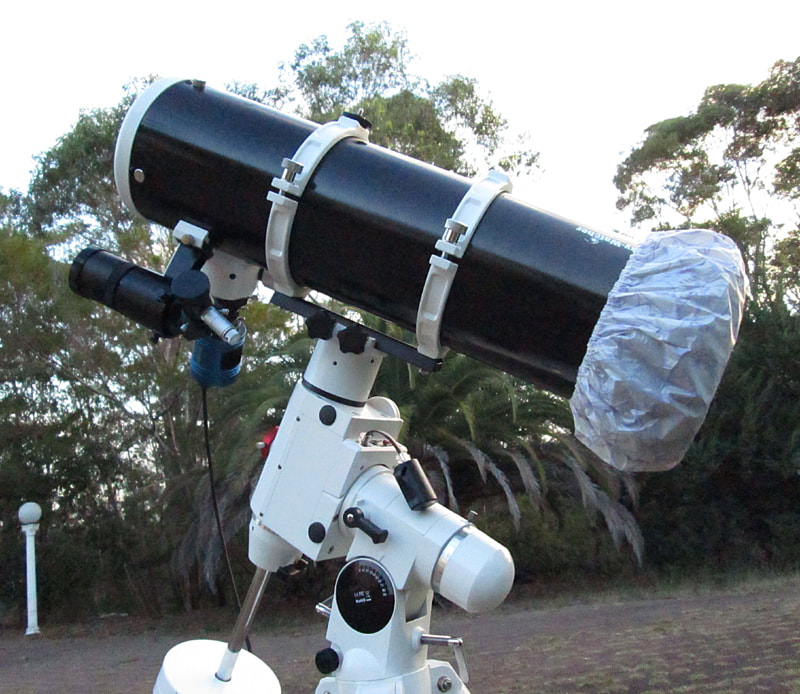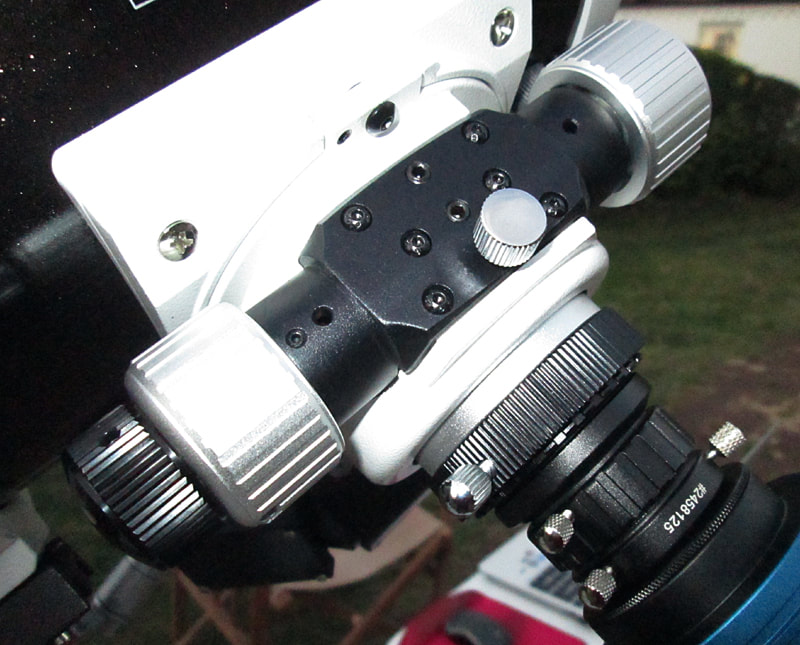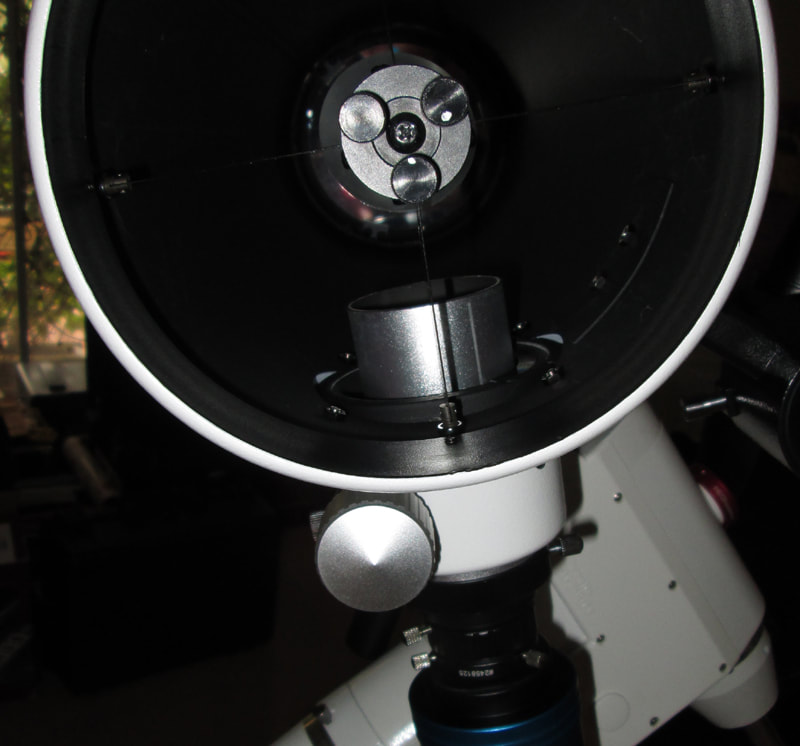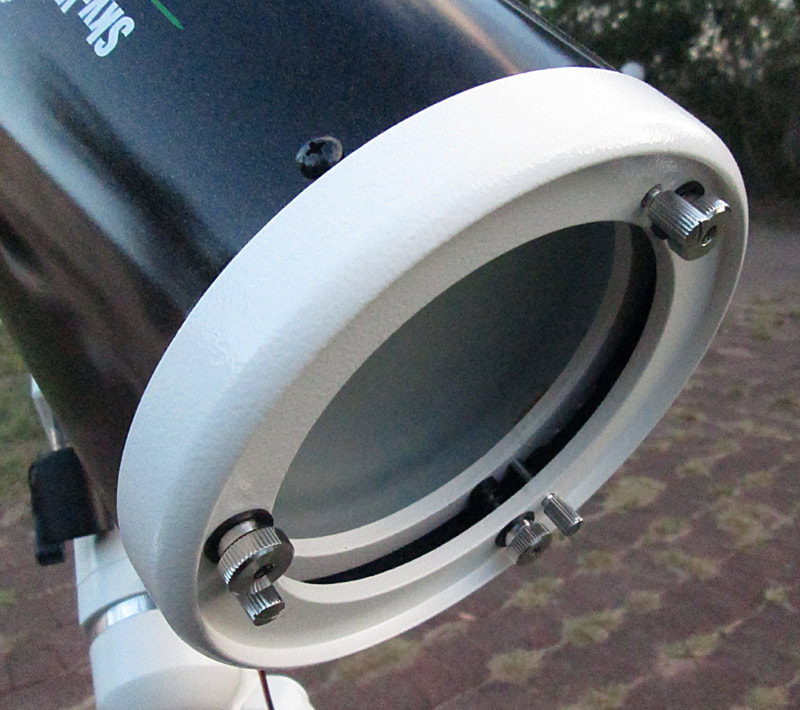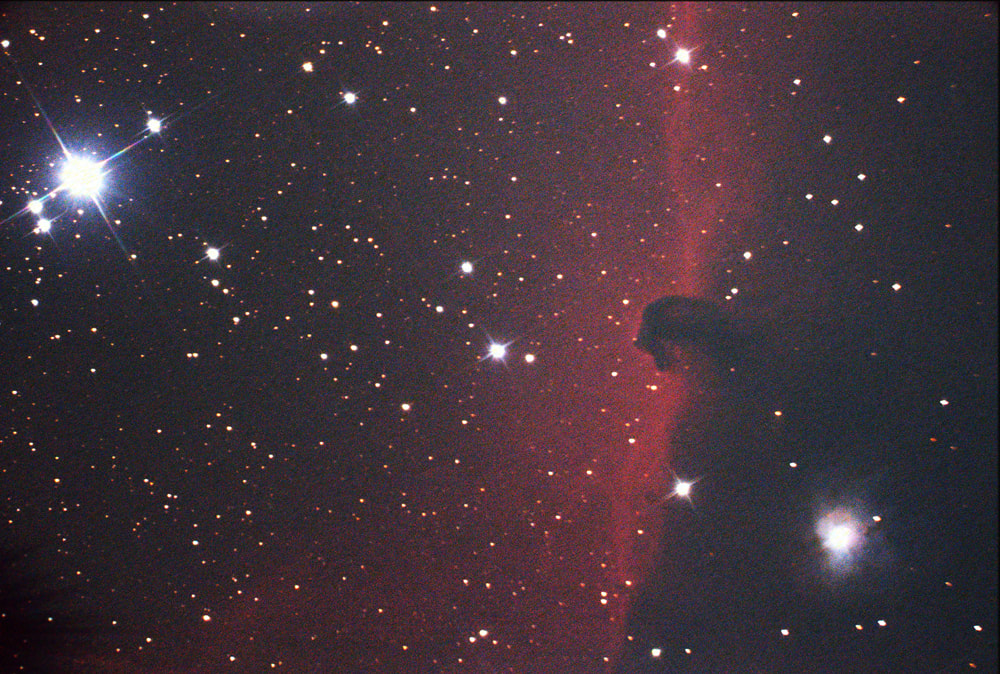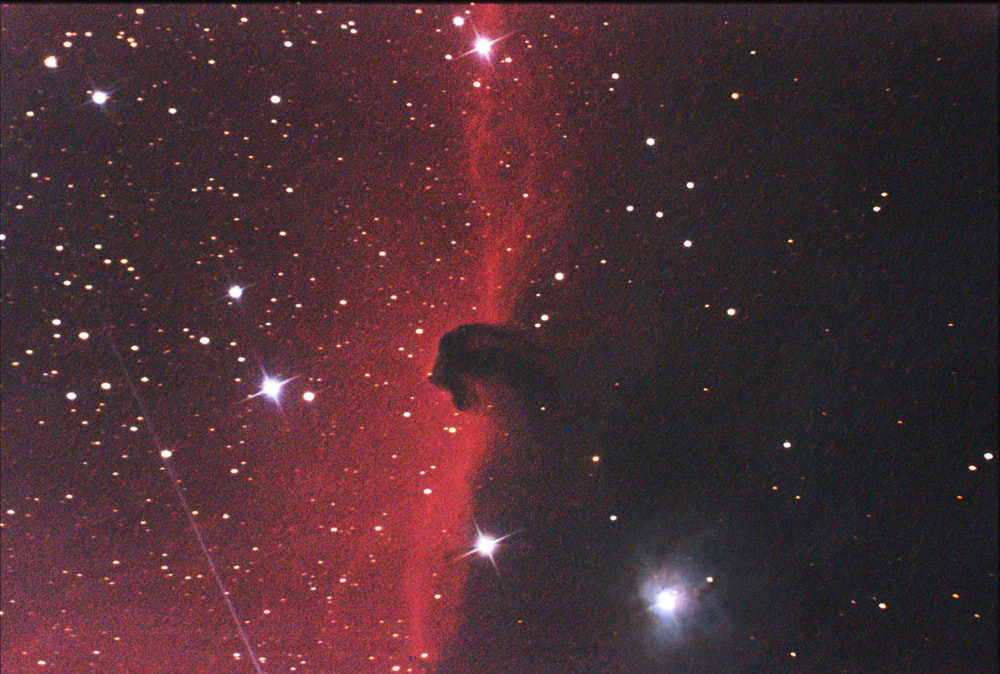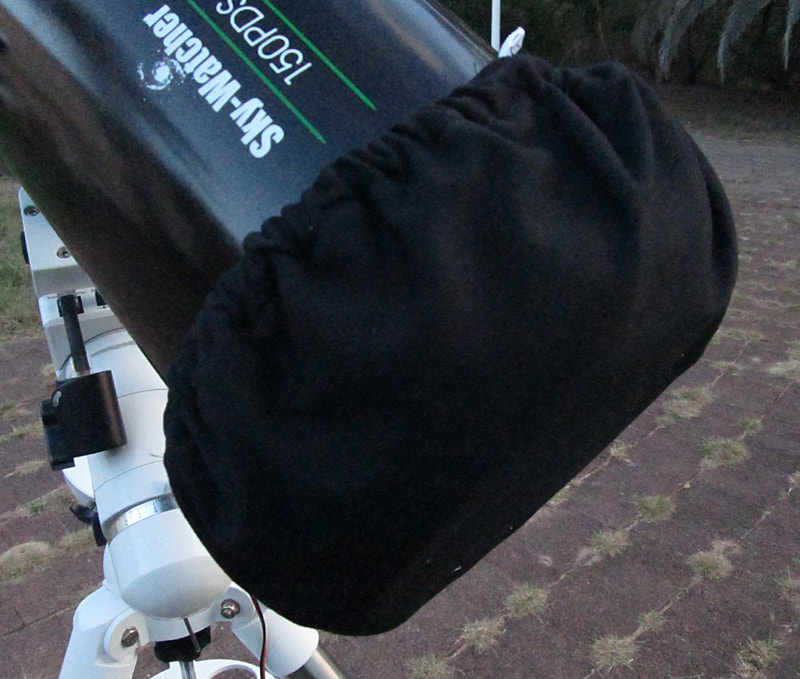Sky-Watcher PDS 6 inch f/5 Newtonian
|
It all started in Kenya with the home built 6 inch f/8 Newtonian and now it's full circle back again with another 6 inch Newt. The reason – well the little 5 inch Vixen R130sf proved to be such fun to use for casual on-screen viewing and some outreach use that I wanted to continue with the experience but at the same time overcome a few of that little 'scope's somewhat irritating foibles. The main issue was with the Vixen's focuser. The whole 'scope was quite inexpensive and the focuser was clearly built to suit. It was perfectly designed for the lightweight eyepieces that came with it but it did struggle a bit to cope with the additional weight of the imaging camera which pulled sideways in the draw tube in certain orientations of the telescope tube. This resulted in some minor but noticeable coma on one side or the other of the camera's on-screen display. Also the focuser knob did not include a reduction gear meaning that it was a bit of a challenge to find accurate focus for the camera at f/5. A further problem was that the Vixen did not hold precise collimation when the telescope tube was pointed in different directions. I never could work out if this was caused by the focuser or by flexure of the tube or if it had something to do with the main mirror mounting. And lastly, making collimation adjustments to the main mirror was a bit of a palaver. It was first necessary to remove a metal covering back plate and then use a combination of an Allen key and a Philips screwdriver to turn the adjustment and locking bolts.
|
The Sky-Watcher is definitely a step up. The focuser is a very sturdy low profile 2 inch unit that can itself be collimated with the optical tube. It is of the Crayford type giving very smooth operation. It has a ten-to-one reduction knob in addition to the standard knob making it very easy to get fine focus for the camera. And it has a locking screw that not only ensures that the selected focus point will be held fast but also that there will be no loss of collimation that might otherwise be caused by sideways drag of the camera's weight. Collimation adjustments are now a breeze. The addition of Bob's Knobs to the secondary mirror holder and the standard knurled adjustment and locking knobs at the back of the main mirror cell mean that it's no longer necessary to use any tools such as Allen keys or screwdrivers. Tests with the laser collimator have proved that once precise collimation has been achieved it is firmly held no matter which way the telescope tube is pointed.
The extra inch in diameter of the main mirror gives, in theory, a 29% increase in light gathering capacity over the 5 inch Vixen. But against that, depending on what combination of coma corrector and focal reducer is used, when the camera is brought to focus the 2 inch draw tube of the focuser can protrude quite a bit into the path of light reaching the main mirror. Not only does that somewhat reduce the theoretical light gathering increase but it also adversely affects the quality of the image delivered to the camera. Some experimentation was needed to reach the optimum combination. Using the front of the MFR5 focal reducer gives an effective reduction in focal ratio from f/5 down to f/3.4. However, when using the Baader coma corrector, in order to get the camera into focus the draw tube must be racked back almost completely into the focuser housing with the result that it then protrudes too far into the telescope's optical tube. The back end of the MFR5 is a better choice with the coma corrector because even 'though at f3.85 it gives a comparatively smaller field of view it does not cause the focuser draw tube to block any incoming light. However, if the coma corrector is abandoned and a short 2" to 1.25" adaptor is used instead, the front end of the MFR5 focal reducer can be used quite satisfactorily without displaying much coma due to the small size of the camera's sensor. It is that combination that will be used henceforth. However, the resulting field of view is noticeably smaller than previously obtained with the Vixen R130sf. In appearance the Sky-Watcher is quite elegant with its black and white motif. However this is compromised somewhat by my addition of a shower cap over the back end of the optical tube. Unlike the Vixen, the Sky-Watcher does not have a standard cover over the back of the tube and while this does make for easy access to the primary mirror's collimation adjustment knobs it does also allow light to enter the rear of the tube. This can be quite noticeable when the camera is used and the front cap is placed on the tube. The camera's on-screen display is then not entirely dark and aiming the back of the tube at some light source causes the display to brighten noticeably. To counter this I made up a rear-end cap from two black cardboard disks glued together and centred in an elasticised black fabric cap that slips over the back end of the tube. This, in turn, is covered by a conventional plastic shower cap to protect the black fabric from any night time dew. It may not look very attractive but it does its job just fine. |
|
